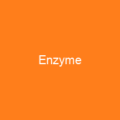Nicotinamide adenine dinucleotide (NAD) is a cofactor central to metabolism. In metabolism, NAD is involved in redox reactions, carrying electrons from one reaction to another. Because of the importance of these functions, the enzymes involved in NAD metabolism are targets for drug discovery.
About Nicotinamide adenine dinucleotide in brief

The reaction is easily reversible, when NADH reduces another molecule and is re-oxidized to NAD+. This means the coen enzyme can continuously cycle between the NAD+ & NADH forms without being consumed. The NAD+ chemical species’ superscripted addition sign reflects the formal charge on one of its nitrogen atoms. It’s actually a singly charged anion — carrying a ionic charge of 1 — under conditions of physiological pH. NADH is a doubly charge anion, because of its two bridging phosphate groups. It can be synthesized from simple building-blocks from either tryptophan or aspartic acid, each a case of an amino acid. More complex components are taken up from nutritive compounds such as niacin; similar compounds are produced by reactions that break down the structure of NAD, providing a salvage pathway that “recycles” them back into their respective active form. The nucleosides each contain a ribose ring, one withadenine attached to the first carbon atom and the other with nicotinamide at this position. The nicotinamonide moiety can be attached in two orientations to this anomeric carbon atom. The compound exists as two diastereomers, It is the β-nicotinamide diastsereomer of NAD+, that is found in organisms. The nucleotides are joined together by a bridge of two phosphate groups through the 5′ carbons.
You want to know more about Nicotinamide adenine dinucleotide?
This page is based on the article Nicotinamide adenine dinucleotide published in Wikipedia (as of Dec. 03, 2020) and was automatically summarized using artificial intelligence.







